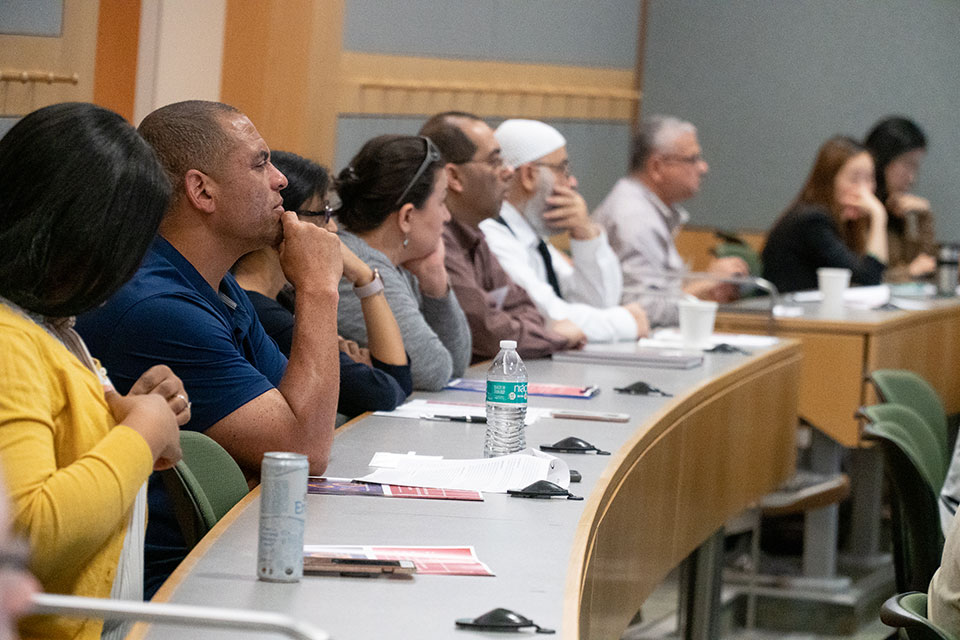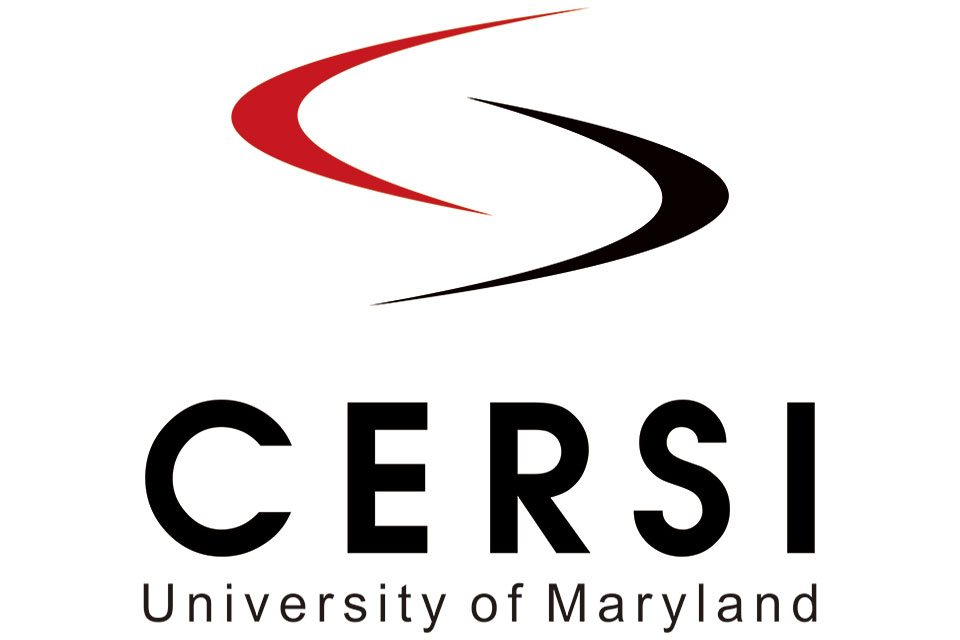M-CERSI Conference Spotlights Regulatory Applications for Dissolution Testing
Event sponsored by the University of Maryland Center of Excellence in Regulatory Science and Innovation addressed current knowledge gaps in the dissolution similarity evaluation of pharmaceutical products.

By Malissa Carroll
June 13, 2019
The University of Maryland School of Pharmacy welcomed nearly 170 researchers from across academia, government, and industry to Pharmacy Hall on May 21 and 22, for “In Vitro Dissolution Profiles Similarity Assessment in Support of Drug Product Quality: What, How, and When.” The conference sponsored by the University of Maryland Center of Excellence in Regulatory Science and Innovation (M-CERSI) featured numerous presentations and breakout sessions that aimed to help participants better understand the reliability and predictive ability of the most commonly used mathematical approaches to assess dissolution profiles’ similarity, identify best practices for the assessment of similarity in dissolution profiles, and recognize the role of similarity testing considering safe space and clinically relevant dissolution specifications.
“On behalf of the School of Pharmacy, I thank you all for being here today and engaging in what promises to be a productive discussion about the value of dissolution similarity testing in supporting drug product quality,” said James Polli, PhD, the Shangraw/Noxell Endowed Chair in Industrial Pharmacy and Pharmaceutics in the Department of Pharmaceutical Sciences (PSC) at the School and co-principal investigator for M-CERSI. “We know that evaluating the rate and extent of in vitro drug release is an integral element of drug product development, and often critical in the assessment of consistent in vivo drug product performance. This workshop will help us identify the most suitable statistical approaches for this work, as well as address other knowledge gaps in the dissolution similarity evaluation of drug products.”
Dissolution refers to the rate and extent to which the amount of a drug substance dissolves over a defined period of time. Dissolution testing describes the experiments conducted by researchers in a controlled laboratory environment (in vitro) that aim to assess how a drug’s specific dosage forms perform. Researchers must conduct dissolution testing any time there is a change in the process or formulation of an existing drug. Regulators like the U.S. Food and Drug Administration (FDA) use the results of these experiments to predict whether the change will alter the effectiveness of the drug when taken by patients (in vivo).
Dissolution testing is performed using a variety of methods. The results from each method are compared for similarity to ensure consistent performance of the drug. In the United States, the FDA guidance on dissolution testing outlines three methods that researchers can use to evaluate the similarity of a drug’s dissolution profile, including a model independent approach using a similarity factor (f2), a model independent multivariate confidence region procedure, and a model dependent approach. The conference aimed to clarify the regulatory application of dissolution similarity testing; review how the standards for dissolution similarity were established; delineate and contrast commonly used approaches to address dissolution similarity; create a robust path for dissolution similarity assessment; delineate the value of similarity testing in light of clinically relevant specifications and safe space; and provide an opportunity for direct dialogue between stakeholders in academia, regulatory agencies, and industry to identify gaps in knowledge and potential future research opportunities.
“Dissolution testing has many applications across the field of drug development,” said Sandra Suarez, PhD, master biopharmaceutics reviewer in the Office of Pharmaceutical Quality in the Center for Drug Evaluation and Research (CDER) at the FDA, who spearheaded the organizing committee for the conference. “It is a critical tool in supporting drug product quality, as it is the only in vitro attribute that is able to probe the rate and extent of in vivo drug release. However, in my work with the FDA, I have noticed that we still lack information and understanding about the best way to perform this testing, despite having used it in our studies for many years.”
The conference kicked-off with a keynote presentation by Roger Nosal, PhD, vice president and head of global chemistry, manufacturing, and controls at Pfizer. Titled “What Does It Mean to Demonstrate Dissolution Similarity?”, the presentation offered a definition of similarity as it relates to dissolution testing, and attempted to tackle questions surrounding how much variability is acceptable in dissolution testing and whether the definition of similarity also serves as a measure of predictability. It also highlighted some of the regulatory opportunities that might exist in the future for dissolution testing.
“My dream is to see a risk-based definition of similarity that harmonizes the expectation of regulators around the world,” said Nosal. “As drug product developers, it does us no good to use dissolution testing methods to get approval in the U.S. for a bioequivalent method for which we will still need to conduct a clinical trial somewhere else in the world.”
He added, “However, it is important for us to recognize that such large-scale changes often occur only incrementally – it will never happen in a big way, but rather in smaller steps that, once combined, will lead to transformative change across academia, regulatory agencies, and industry.”
Additional presentations addressed regulatory and industry perspectives on dissolution similarity testing, including best practices and challenges encountered by agencies and organizations around the world, such as the FDA and European Medicines Agency (EMA). Presenters highlighted the advantages and disadvantages associated with FDA-approved methods for dissolution similarity testing, including f2 similarity testing, the bootstrap approach for similarity testing, and the multivariate statistical distance (MSD) test.
“It is important to understand that the f2 value is only part of the equation that we as regulators consider when making a decision about the similarity of drug products,” said Om Anand, PhD, staff fellow in the Office of Generic Drugs in CDER at the FDA. “We look at all of the information available piece by piece, where one piece is the drug product itself, another piece is dissolution testing, and another piece is clinical relevance. The f2 value can be a small piece of the pie or it can be larger piece of the pie – but it is only a piece of the pie, not the entire pie. It is crucial that we assess the totality of information available before making any final conclusions about the drug product.”
Breakout sessions scheduled across two afternoons allowed attendees to learn more about the advantages and disadvantages of available statistical approaches to dissolution profile comparisons for similarity testing, as well as dissolution similarity assessment, requirements, and global expectations. New information presented during the lectures and breakout sessions allowed attendees to work together to draft a decision tree that outlined how and when researchers should apply certain methods to assess for similarity testing.
“I was extremely impressed with the quality of the work that went into this program,” said Nosal. “I attend a lot of forums and participate in a lot of different engagements globally. This has been one of the most well-organized, thoughtful programs that I have been involved with in a long time. Everyone who attended will benefit tremendously from the discussion.”



